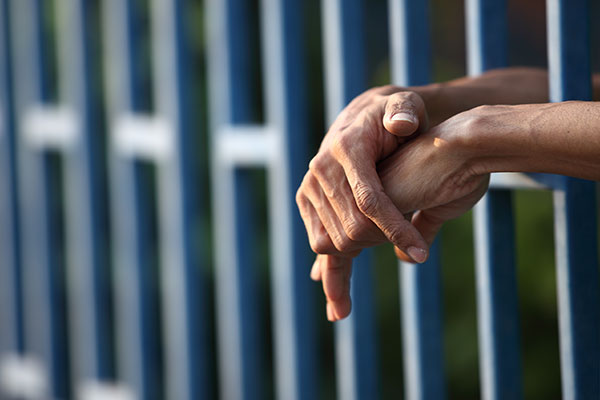A top federal drug official is calling for the government to move “away from criminalization” under the drug war, saying that the country’s failure to offer drug treatment to incarcerated people only exacerbates the ongoing opioid-involved overdose crisis.
“It remains a common belief that simply stopping people from taking drugs while in jail or prison is an effective approach to treatment,” wrote Nora Volkow, director of the National Institute on Drug Abuse (NIDA), and Tisha Wiley, NIDA’s associate director for justice systems. “But that belief is inaccurate and dangerous.” The post was published July 9 on life sciences website STAT and republished July 15 on NIDA’s website.
In fact, opioid overdose “is the leading cause of death among people returning to their communities after being in jail or prison,” the authors continued. “Providing addiction treatment in these settings could change that.”
In addition to calling for wider access to methadone, buprenorphine and naltrexone—the three Food and Drug Administration-approved medications for opioid use disorder (MOUD)—the authors also said a shift away from the drug war could improve outcomes and help families.
“Fundamentally, an individual’s best or only option to receive addiction treatment should not have to be during incarceration,” they wrote. “In an ideal world, treatment and prevention systems in the US would proactively address social drivers of health and mental health needs to stop the cycle between addiction and incarceration.”
“Moving away from criminalization of substance use disorders toward a public-health approach would remove a key structural practice that perpetuates inequalities,” they continued. “It would improve lives for people and their families.”
🆕 @statnews op-ed in Nora’s Blog: #NIDA Director Dr. Nora Volkow & colleague Dr. Tisha Wiley discuss how the overdose crisis impacts people in jails or prisons, and the importance of providing addiction treatment in criminal justice settings. @jcoinctc https://t.co/nlqpzAEvKd pic.twitter.com/muUAXr2Hog
— NIDAnews (@NIDAnews) July 15, 2024
As for MOUD access for incarcerated patients, the NIDA representatives argued that it “benefits public health and public safety. It’s cost-effective. It can help break the cycle of recidivism. It can reduce the burden on the wider health care system, including emergency departments.”
“Programs across the country are underway to offer naloxone and medications for opioid use disorder in jails and prisons, paired with instruction, training and social support,” they wrote. “Federal agencies have launched programs to help people manage withdrawal in jails and provide financial health care support for people who are about to re-enter the community. A recently published revised methadone rule now allows any jail or prison registered as a hospital or clinic to dispense medications for opioid use disorder in certain circumstances.”
Nationwide, fewer than half of jails and one-tenth of state prisons offer all three MOUD.
Roughly 60 percent of people who are incarcerated have a substance use disorder, the authors added, citing a 2017 Department of Justice report.
Even those charged with enforcing drug laws are “starting to see how addiction treatment increases safety for everyone,” they continued, referencing a Massachusetts sheriff, Chris Donelan, whose jail is one of a small number with a licensed opioid-treatment program:
“When someone is booked into our facility, often we are the first treatment provider the person has seen in years,” Donelan told his University of Massachusetts research partners. “These treatments save lives and help people enter into recovery. Treatment makes the work of our facility much easier. We have less fights, less contraband, and a much safer facility.”
Volkow has also said in the past that drug criminalization has “created a structurally racist system.”
While there’s still a long way to go, the NIDA authors wrote, they drew attention to the National Institutes of Health’s work funding partnerships “to figure out how to link people with addiction to care during and after their time in the corrections system. These researchers are poised to share new evidence as it emerges that will help other communities make data-driven changes so they can implement what is most efficient in justice settings.”
Volkow, director of NIDA since 2003, said in late 2023 that taking an abstinence-only approach to drug treatment was “magical” thinking that “costs a lot of lives.”
She’s also said that drug criminalization has “created a structurally racist system” in which Black people are treated “worse” than others.
As for marijuana, Volkow has said there’s “no evidence” that occasional use is harmful for adults. And at a 2022 D.A.R.E.-sponsored event hosted by an anti-marijuana advocacy group, she reiterated that data showed youth marijuana use had remained stable “despite the legalization in many states.”
Meanwhile, Volkow said at a congressional hearing in May that there’s “tremendous excitement” about the therapeutic potential of psychedelics. However, she cautioned that while the treatment option is “very promising,” people should understand that “it’s not magic” and needs more rigorous research.
The federal official has repeatedly discussed her interest in psychedelics therapy. She said in 2022 that the “train has left the station” on psychedelics amid the policy reform movement. Volkow discussed the issue in an earlier interview with Marijuana Moment as well.
Photograph via Texas Comptroller
This story was originally published by Marijuana Moment, which tracks the politics and policy of cannabis and drugs. Follow Marijuana Moment on Twitter and Facebook, and sign up for its newsletter.





Show Comments